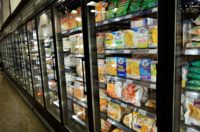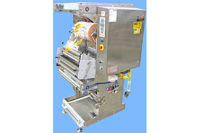In order to meet the global population’s growing demand for food, research by the Food and Agricultural Organization of the United Nations (FAO) predicts that the worldwide food manufacturing and processing industries need to increase their total output by 70% by 2050.
With the rise in the planet’s population around 60 million people per year, it is an issue that cannot be ignored.
There are several ways, each with varying degrees of difficulty, to enhance the efficiency of food production. These include tackling climate change, increasing the availability and fertility of land and improving water supply. However, an important element of food production that must be addressed immediately is the further optimization of crop yields, as it will be a significant factor in meeting the 2050 target.
Whilst tackling climate change, improving the quality and fertility of arable land and supplying water will take time, increases in food sorting efficiencies are possible now. This can be done by utilizing the latest available food sorting technologies and machines, which deliver greater yields, enhanced profitability for processors, and more importantly, advanced knowledge from data that can be used further along the processing line.
It is important to recognize that, in addition to the demand for more food, the desire for choice and variety is also growing. This is especially the case in developing countries that are adopting western, middle-class consumption habits such as the desire for a greater variety of food types and outlets in which food is served and consumed.
As people move away from traditional home-cooked meals, the demand for convenience and ready-meals is increasing, bringing with it opportunities to benefit, but also obstacles to overcome.
For instance, an average French fry plant produces 140,000 tons of French fries per year. By increasing yields by as little as 0.5% through modern sorting technologies and techniques, a processor could take an estimated 90 truckloads off the roads. This action, which has positive repercussions for the environment as a whole, will increase the availability of raw material and boost profitability.
It is important to highlight that this principle can be extended and implemented in all areas of food production. This is especially relevant since the United States Department for Agriculture (USDA) recently claimed that 31% of American-grown food was not available for human consumption at retail and consumer levels. With a commitment to yield optimization, industries can help minimize this waste.
In terms of volume, the same report stated that over 51 million tons of food was lost in America. In monetary terms, this waste represented over $161 billion as purchased at retail prices.
To help overcome this, the food sorting industry is investing in technological developments.
For example, the ability to efficiently sort vegetables, potatoes and nuts, which represent over 19% of the total amount of food wasted in the United States alone. By increasing yields by just 1%, it is possible to increase the final amount of this type of produce in the United States by 11 million tons. Apply this on a global scale, and the 2050 food level objective starts to look more achievable.
The improvement in yield enhancing technology is not simply about ensuring that food can be used for its initial purpose, but it also identifies what produce can find its way into the food chain with an alternative use.
These improvements will result in produce that would once have been identified as waste being recovered. A food type that does not make the grade for sale in its original form can be recouped for the creation of potato flakes, tomato sauces or other alternatives. It can also be sold as a grade B product, ensuring that waste is reduced at every stage of the process.
Developments in technologies, such as a 360-degree surround view of the produce for optimal inspection, combined with innovative detection and rejection technology, result in more valid decisions about the quality of the product. This technological progress not only improves the quantity of food available, but it also maintains the high levels of quality expected by consumers who are increasingly interested in what they are purchasing.
Alongside this, the population growth of developing nations—especially those in Sub-Saharan Africa, which according to the FAO, is expected to grow by up to 108%—means that plans for improved yields in these economies must be tackled sooner rather than later.
The use of ever-improving technology to directly increase yields is a move in the right direction. However, the next generation of food sorting machines will provide vital information that not only increase yields, but also look at improvements further down the production line and in future seasons.
If a food processor was to notice depressions in yield in a particular area of the process, the results taken from the sorting machine could create a solution to easily identify and form actions earlier in the food growing process. Armed with this data, food processors are able to formulate plans to overcome present issues.
If the world is to meet the expected demands for food by 2050 and to make further improvements as the population continues to grow beyond that date, it must tackle the issue of improving yields quickly. By investing in sorting technologies and machines, food manufacturers will be able to not only satisfy the need for increased volumes of product, but also increase their revenues.



